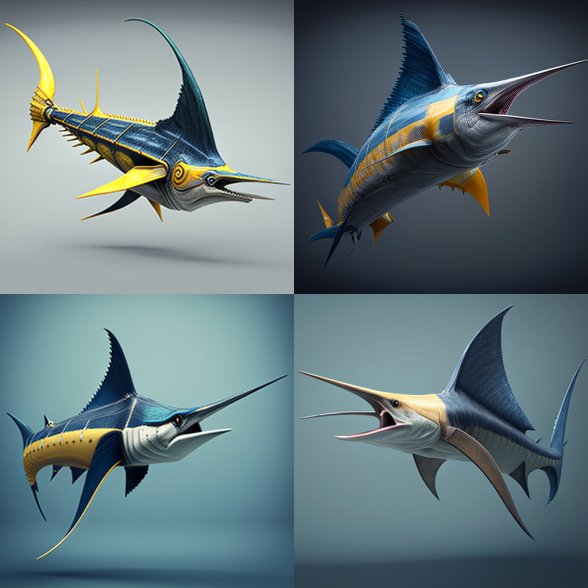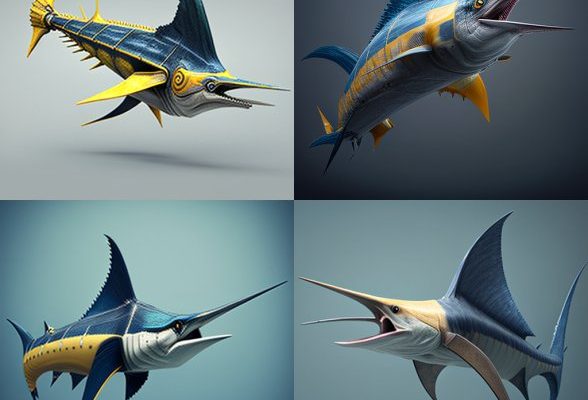
Imagine a world where survival hinges not just on strength or speed, but on the ability to wield a unique tool effectively. For the swordfish, that tool is its bill, and it’s shaped by millions of years of evolution. This journey starts from humble beginnings in the vast seas and leads to the modern swordfish, a predator that knows how to navigate its underwater realm with ease and grace. So, let’s dive into the evolutionary journey of the swordfish and discover what makes it so special.
The Origins of the Swordfish
The swordfish, belonging to the family Xiphiidae, likely began its journey around 50 million years ago. Early ancestors of the swordfish were more similar to other bony fishes, but over time, they adapted to become the agile predators we know today. Picture a time when the oceans were teeming with various fish species vying for survival. In this competitive environment, certain traits became advantageous.
One of the first key adaptations was the development of the sword-like bill. This bill wasn’t just for show; it allowed swordfish to hunt more effectively. With their elongated snouts, they could slash through schools of smaller fish. Imagine swinging a sword in a sword-fighting match—quick strikes can make all the difference. The swordfish evolved to use its bill both as a weapon and as a tool to stun its prey.
As the climate and ocean conditions changed over millions of years, the physiological traits of swordfish began to evolve further. They developed streamlined bodies that reduced drag while swimming, helping them achieve impressive speeds of up to 60 miles per hour. This ability to swim swiftly aided their hunting strategy, allowing them to ambush prey and evade larger predators.
Adaptations for Survival
The swordfish’s adaptations are not just limited to its bill and speed. Another remarkable feature of this fish is its ability to regulate its body temperature. Typically, fish are ectothermic, meaning their body temperature fluctuates with the surrounding water. However, swordfish can maintain a higher body temperature, which enhances their muscle performance and allows them to thrive in deeper, colder waters.
How does this work? Swordfish have special blood vessels that help retain heat generated by muscle activity. This adaptation is like having a cozy sweater in cold weather. It means they can hunt efficiently in deeper waters where other fish may struggle. This advantage opens up a world of opportunities, allowing swordfish to hunt a wider variety of prey and occupy different ecological niches.
Their keen eyesight is another critical adaptation. Swordfish are equipped with large eyes that can see well in low-light conditions, making them formidable hunters in the dark depths of the ocean. Think about how beneficial it is for a predator to have excellent night vision—you can spot dinner while others are left in the dark. This adaptation further secures their role as apex predators in marine ecosystems.
Feeding Habits and Hunting Strategies
Swordfish are carnivorous and have a diverse diet. They primarily feed on fish, such as mackerel, herring, and sardines, but they also eat squid and crustaceans. Their hunting strategy is a fascinating blend of speed and stealth. When chasing prey, swordfish rely on their burst of speed and agility to catch them off guard.
One common hunting technique involves slashing with their bills to stun or injure schools of fish. Picture a martial artist using a quick, sweeping motion to knock opponents off balance. This tactic makes it easier for the swordfish to scoop up its prey with its mouth. This approach minimizes the energy spent on each hunt, which is crucial for survival in the open ocean.
There’s also a social aspect to swordfish hunting. While they are often solitary creatures, some swordfish have been observed hunting in pairs or small groups. This teamwork can increase their success rate when targeting larger schools of fish. It’s a reminder that sometimes, even the most capable lone wolf can benefit from collaboration.
Ecological Role and Importance
Swordfish play a vital role in marine ecosystems. As apex predators, they help regulate the populations of smaller fish and maintain a balance in the food web. By controlling these populations, swordfish contribute to the overall health of the ocean environment.
Moreover, they are also prey for larger marine animals, such as sharks and orcas. This position in the food chain highlights the interconnectedness of marine life, illustrating how the fate of one species can affect many others. If swordfish populations decline, it could lead to overpopulation of smaller fish and disrupt entire ecosystems.
In addition to their ecological importance, swordfish also hold economic significance. They are a popular target for both recreational and commercial fishing. Swordfishing tournaments attract enthusiasts who admire their strength and speed. However, this popularity has led to overfishing in some areas, putting pressure on their populations. Sustainable fishing practices are essential to ensure that future generations can continue to enjoy and study these remarkable creatures.
Conservation Efforts
Given the pressures from overfishing and habitat degradation, conservation efforts for swordfish have become increasingly important. Various organizations and governmental bodies are working to implement sustainable fishing practices and manage populations more effectively. The goal is to ensure that swordfish stocks remain healthy and viable for years to come.
One crucial part of these efforts is tracking and monitoring swordfish populations. Scientists use tagging and tracking technologies to gather data on their movements and behavior. This information helps researchers understand their migration patterns, breeding behaviors, and overall population health. The more we know, the better we can protect these magnificent animals.
Additionally, promoting awareness about the importance of sustainable fishing can encourage consumers to make eco-friendly choices. By choosing sustainably caught seafood, individuals can contribute to the health of swordfish populations and support responsible fishing practices. It’s like voting with your wallet, empowering consumers to champion marine conservation.
The Future of Swordfish
As we look ahead, the future of swordfish will depend on our actions today. With climate change impacting ocean temperatures and habitats, it’s essential to consider how these changes might affect swordfish populations. Warmer waters could influence their distribution and feeding habits, which would have cascading effects on marine ecosystems.
Moreover, ongoing conservation efforts and sustainable fishing practices will play a crucial role in ensuring that swordfish populations remain stable. By continuing to support research and awareness campaigns, we can help safeguard the future of this incredible species.
Ultimately, the swordfish is more than just a remarkable predator; it’s a symbol of the delicate balance of marine life. As we continue to learn from its evolutionary journey, it reminds us of the interconnectedness of all species, urging us to protect our oceans and the creatures that inhabit them.
In conclusion, the evolutionary journey of the swordfish showcases not just the adaptability of a species but also the importance of preserving the delicate balance of our marine ecosystems. By understanding their role in nature and supporting conservation efforts, we can ensure that the swordfish continues to thrive in the depths of our oceans for generations to come.

